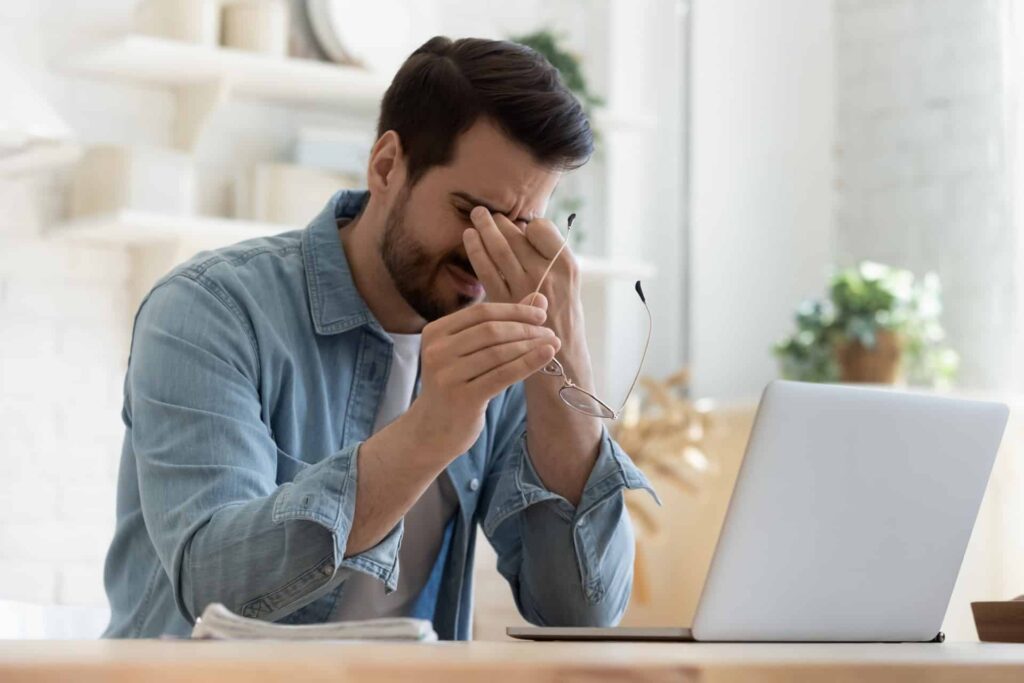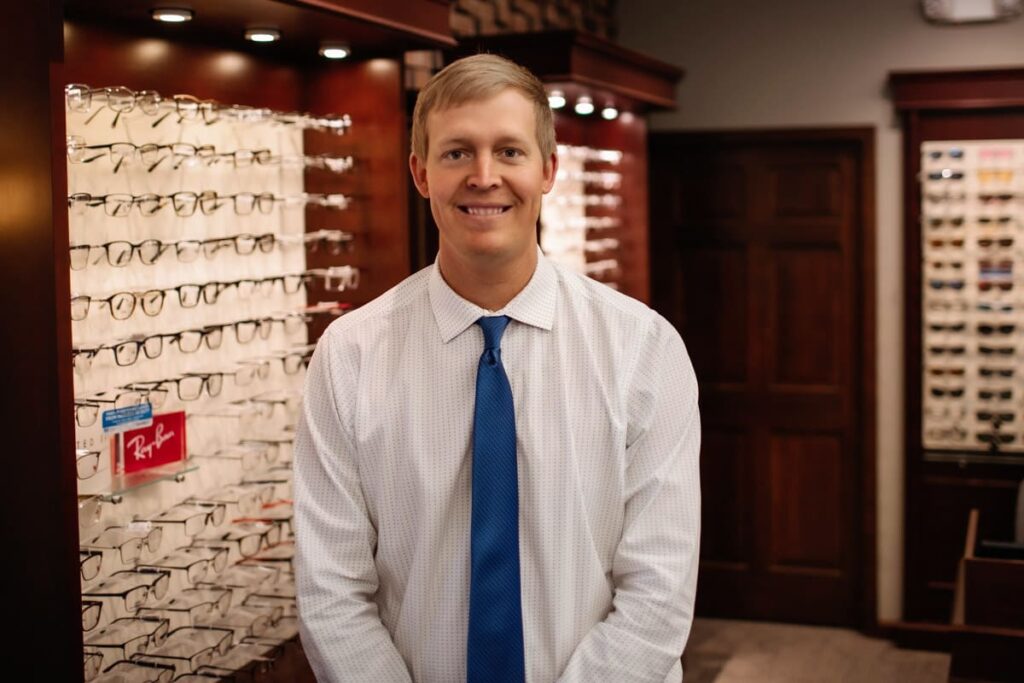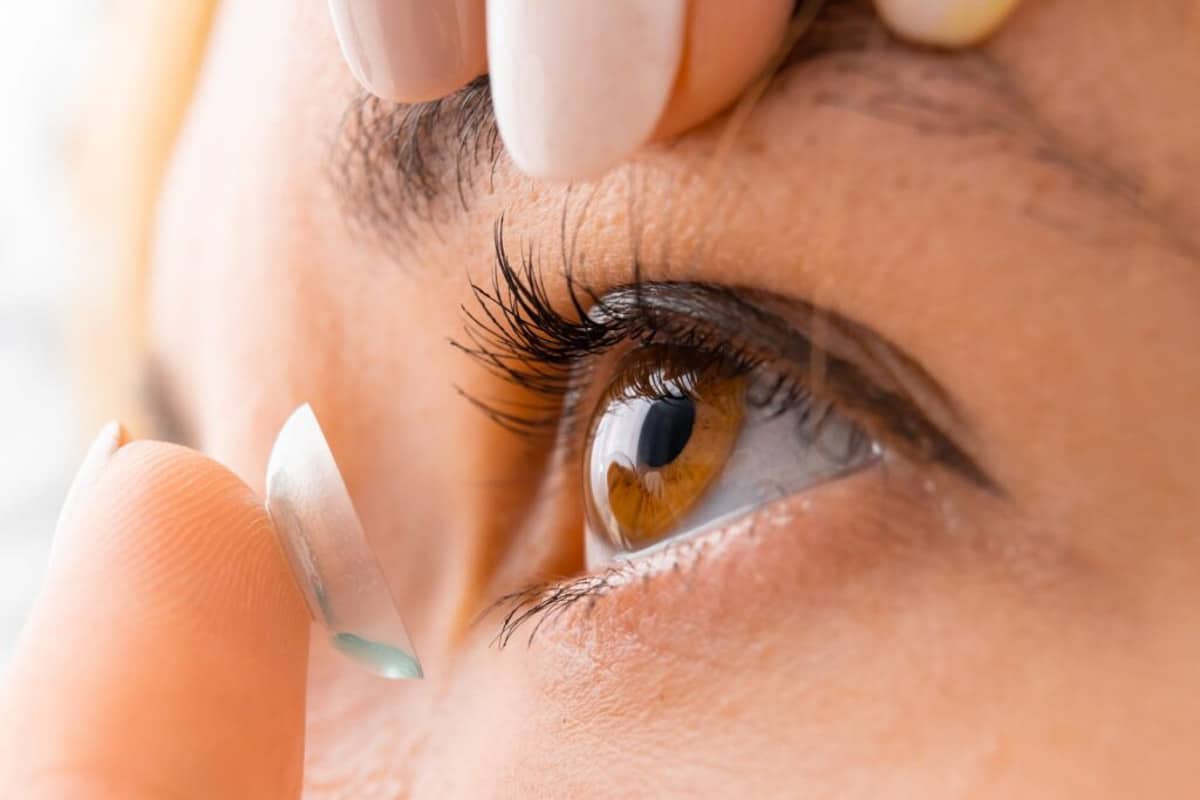Most people who wear contact lenses can think of a time when they fell asleep…
How to Protect Your Eyes from Computer, Phone, and TV Screens!

The majority of people in the United States spend most of their waking hours interacting with, and intensely focused on, screens. We use computers at work or school (and use our phones on breaks), then come home and stream something on TV while having dinner, doing some chores, and for maybe just a few more minutes before going to bed.
That’s so many screens in our daily lives—we’re basically on schedule to get to that oversized neon billboard hologram future Bladerunner promised us!
But in all seriousness, is all that screen time really okay for us? No. No it isn’t. We’re putting this part at the beginning because it’s important: screen time has many negative effects, especially for your eyes. Luckily, there are ways to reduce those negative effects, and we’re here to explain how to protect your eyes from computer, phone, and TV screens.
What Are the Negative Effects of Too Much Screen Time?
Stop us if you’ve heard this one before: after a long day in front of a series of different screens, your eyes hurt. A lot. If this sounds familiar, then you’re already familiar with digital eye strain.
Digital eye strain is estimated to affect 50% of computer users, and it causes the following symptoms.
- Dry eyes
- Headaches
- Blurred vision
- Neck and shoulder pain
But what causes digital eye strain and how do you make it go away and never come back?
What Causes Digital Eye Strain?
When looking at a screen—or anything else we’re highly engaged with and paying attention to (yes, you can even strain your eyes by reading a book, believe it or not)—several major changes take place in how we behave.
We blink less, breathe more shallowly, and become more still. At the same time, the brain releases chemicals that decrease our perception of pain. This means we don’t feel the effects of blinking less, breathing less, and staying in the same place for an extended amount of time the same way we do when we’re not intensely focused.
This is a useful thing for our brains to do occasionally, when necessary, but it’s less useful when we spend so much of our time intensely focused on our screens.
The Effects of Blue Light on Our Eyes
The reason why screens cause strain on our eyes is because they emit blue light. There are several colors of light, from red to orange to green to blue—a full spectrum of colors—and each color has a unique wavelength and energy level. Red and orange light, for example, have long wavelengths and low energy levels, whereas blue light has the shortest wavelength of all the colors and features the highest energy levels of any color the human eye can interpret.
The sun emits every color of light. Whenever you are outside during the daytime, you are naturally exposed to all of these colors, including blue light. However, because of the increased prevalence of screens in our lives, whether we are working, watching a movie, or scrolling through our social media feeds, our eyes are exposed to far more blue light than would otherwise be natural. Thus, our eyes become fatigued, which can lead to headaches, tiredness, and other symptoms.
The best way to combat excessive blue-light exposure is to wear blue-blocking lenses. Also known as blue-light glasses, blue-blocking lenses can reduce digital eye strain and fatigue and relax our visual system. They can also potentially reduce the risk of macular degeneration in the future.
Your best course of action is to pay a visit to your eye doctor if you feel like you require some blue-light protection. We will help you determine what level of protection you require based on your eye health and lifestyle and incorporate that protection into your existing prescription.
Andover & Winfield Family Optometry offers blue-blocking eyewear for both prescription and non-prescription lenses. If you live in Andover, Winfield, or east Wichita, KS, don’t hesitate to schedule an appointment with us! We can help you protect your eyes from the negative effects of excessive blue-light exposure.
Additional Ways You Can Protect Your Eyes from Screens
High-Resolution Screens
This is not a free pass to upgrade all your electronics to the most high-definition versions of those electronics, but it’s not not that either. The more realistic and lifelike images appear, the less work your eyes have to do to interpret what you’re looking at. Technically, that ultra high-def monitor is an investment in your eye health—just don’t try to buy one using your HSA; they probably won’t go for that.
Make It Ergonomic
If your digital eye strain comes with a side of neck and shoulder pain (a rare symptom isolated to extreme cases) take a look at where you’re looking at your screen. Make sure your setup is as ergonomic as possible and take regular breaks to stand up and move around. This will help more than just your eyes!
Reduce Glare
When there’s glare on your screen, your eyes will have trouble adjusting to see the screen as easily as they should. Make sure your screen isn’t facing a bright light source; use an anti-glare matte screen (or screen cover) when you have the option, and if you wear glasses, opt for the best anti-reflective coating you can get.
Adjust Your Lighting
Harsh bright lighting makes your eyes work harder than needed, and using a bright screen in a dark room does the same thing, except in the opposite way. The ideal amount of ambient light when looking at a screen is roughly equivalent to the brightness of the screen, or slightly less.
The 20/20/20 Rule
Whether you can do any of the above tips or not, this one will still work and it’s also the easiest one to do! Every 20 minutes you spend looking at a screen, take a 20 second break to look at something 20 feet away. This is as simple as looking away from your screen and across the room or out a window, even if just a little bit.
Tip: Teach your kids the 20/20/20 Rule. Building this habit early will help them protect their eyes from the potential negative effects of too much screen time for the rest of their lives.
Eye Drops
When your eyes are already strained, you can get some quick relief with eye drops. Over-the-counter eye drops, also called artificial tears, help relieve eye strain by hydrating your dry eyes. If you wear contact lenses, only use eye drops intended for contact lens wearers—we promise the difference does matter!
Regular Eye Exams
Beyond the tips already listed, it’s important to keep your eyeglass or contact lens prescription up-to-date as the front line for reducing eye strain. Even if you don’t have corrective lenses, regular eye exams are still important! Besides being a valuable tool to help identify other health issues early, your eyes can change over time and sometimes they start to need a little help.
Doctor’s Recommendation
Do you feel like your eyes are strained more than usual? Have you already done everything listed here and it’s not helping? Then you could benefit from an eye exam to make sure your vision is as good as it can be, especially if it’s been a while since the last time you had an exam.
If you live in Andover, Winfield, or east Wichita, KS, and you’re due (or overdue) for an eye exam, then we invite you to schedule an appointment with us!
Andover & Winfield Family Optometry offers blue-blocking eyewear for both prescription and non-prescription lenses. Blue-light exposure is becoming an increasingly common issue, and we want to make sure your eyes stay comfortable and healthy.
Call (316) 361-1020 for our Andover location or (620) 221-2015 for our Winfield location. We can’t wait to meet you!
About the Doctor
Dr. Matt Boswell was born and raised in Wichita, Kansas, where he graduated from Kapaun Mt. Carmel High School. He attended Emporia State University to play on the Men’s Basketball Team while getting his Bachelor of Science degree in Biology, Pre-Optometry. While there, Dr. Boswell made the academic honor roll every year while receiving all-league honors his senior year. After graduating from ESU, he went to Memphis, Tennessee, and received his Optometry Degree from the Southern College of Optometry in 2016. Dr. Boswell is excited to practice back in Andover and Winfield, where he was a patient of Dr. Holman’s growing up and shadowed him in high school.
Dr. Boswell’s areas of interest are comprehensive primary eye care and ocular disease, including glaucoma, macular degeneration, cataracts, and diabetes. He also loves fitting contact lenses and seeing kids. He is an active member of the American Optometric Association and the Kansas Optometric Association. Dr. Boswell resides in East Wichita with his wife, Kirsten, a nurse. They welcomed their first child in February 2022, Baker. They love the outdoors, playing sports, fishing, and staying active with their Bernese Mountain Dog, Franny.



